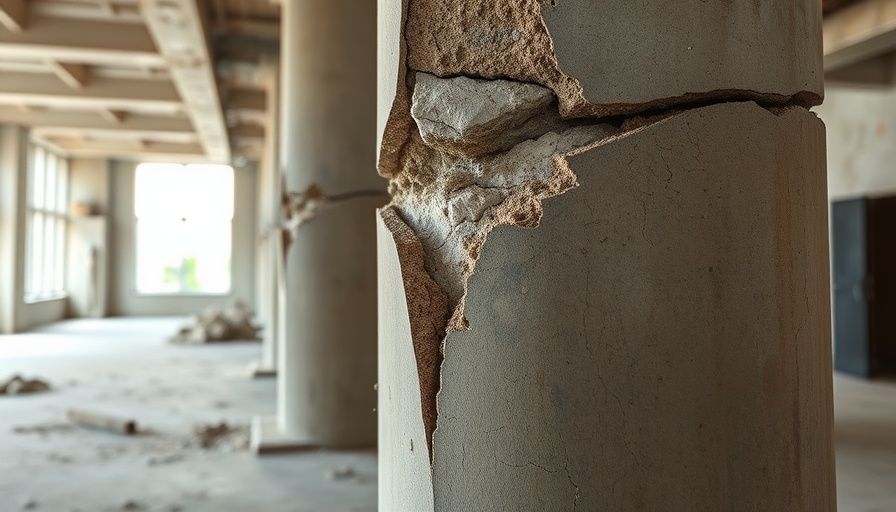
Critical Safety Concerns: Florida Condo Evacuated Amid Cracks
In a concerning incident that exemplifies ongoing issues within residential safety, a Florida condo building has been evacuated after significant cracks were discovered in the structure. This alarming event not only places residents at immediate risk but also raises questions about building regulations, safety standards, and how such situations are managed in coastal regions.
A Deeper Look: Why Cracks Appear in Buildings
Cracks in building structures can result from various factors, ranging from poor construction practices, environmental shifts, soil erosion, and water damage. In coastal Florida, the unique weather conditions can intensify these threats. With the area's sandy soil and regular exposure to storms, structures face an increased risk of foundation issues. Understanding the causes of such critical failures is crucial for preventing future incidents.
The Human Element: Residents’ Perspectives
For the residents of the evacuated condo, the emotional toll can be just as impactful as the physical safety concerns. Many residents reported feelings of anxiety and fear about their homes and possessions, not to mention the uncertainty around finding new housing. One resident, in an interview, described the “gut-wrenching” experience of leaving their home in an emergency. This incident highlights the human aspect behind structural failures, as homes represent stability and refuge for individuals and families.
Historical Context: Previous Building Failures
This incident echoes the tragic collapse of the Surfside condominium in 2021, which caused significant loss of life and prompted extensive scrutiny of building safety across Florida. Since then, numerous structures have been evaluated for safety compliance, revealing a pattern of potential neglect in adequately monitoring aging buildings and enforcing rigorous safety standards. The Surfside tragedy has since urged legislators into action, but skepticism remains regarding the true efficacy of the changes being implemented.
Government's Role: Regulation and Responsibility
The role of local governments and state officials becomes clear when considering the regulatory frameworks that guide building construction and maintenance. Questions arise about whether current regulations are sufficient to protect Florida’s residents from structural failures. With the potential for financial ramifications and lawsuits, municipalities are under pressure not only to enforce building codes but to ensure transparency in reporting safety issues.
Future Predictions: What This Means for Florida
As Florida continues to face the ramifications of climate change—including increased flooding and severe weather events—these safety concerns will likely rise to the forefront of urban planning discussions. Many experts predict that older structures will require comprehensive assessments and potential renovations to withstand ongoing environmental changes. For potential buyers, awareness of a building's safety history will become critical in decision-making processes.
Closing Thoughts: The Need for Proactive Measures
This Florida condo evacuation is not an isolated incident but rather a wake-up call for residents, legislators, and developers alike. The importance of proactive measures in building safety cannot be overstated. Ensuring safe living conditions for all residents is not just a regulatory obligation but a responsibility that requires a collaborative effort among community leaders, state officials, and the general public.
It’s time for the community to take a stand for their safety and demand better standards from their local governments to protect their homes. Vigilance, awareness, and collective action can drive meaningful change to avert further tragedies arising from structural failures.
 Add Row
Add Row  Add
Add 



Write A Comment